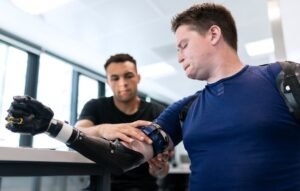Training AI: Understanding the Process
Artificial Intelligence (AI) has become a crucial technology powering various industries, from healthcare to finance. However, the effectiveness of AI systems heavily relies on the training process. Training AI involves exposing algorithms to vast amounts of data to develop an understanding of patterns and make predictions or automated decisions. In this article, we will explore the key aspects of training AI and its significance in creating intelligent machines.
Key Takeaways:
- Training AI involves exposing algorithms to large amounts of data to develop understanding and make predictions or automated decisions.
- The quality and diversity of training data greatly impact the performance and adaptability of AI systems.
- Supervised learning, unsupervised learning, and reinforcement learning are common techniques used to train AI models.
- AI training requires substantial computational power and time to process and analyze extensive datasets.
**Training AI** requires a vast collection of data to teach the algorithms to recognize patterns, interpret information, and perform complex tasks. This data can range from labeled images for object recognition to financial records for predicting market trends. The quality and diversity of the training data play a critical role in the performance and adaptability of AI systems.
While there are various techniques to train AI, **supervised learning** is one of the most widely used methods. During supervised learning, the AI model is provided with labeled data, where the desired output is already known. The algorithm learns to map the input data to the correct output by continuously adjusting its internal parameters through feedback from the labeled examples.
*Unsupervised learning*, on the other hand, focuses on extracting meaningful information and patterns from unlabeled data. The AI model explores the data’s structure without any predefined guidance, allowing it to discover hidden correlations and categorize information based on similarities.
The Training Process:
- **Data Collection**: Gathering a diverse and representative dataset relevant to the AI’s task.
- **Preprocessing**: Cleaning and transforming the data to remove noise, outliers, or inconsistencies.
- **Data Labeling**: Assigning labels or annotations to the training data to guide supervised learning.
- **Model Building**: Designing the AI model architecture and selecting appropriate algorithms.
- **Training**: Actively exposing the AI model to the training data, enabling it to learn patterns and make predictions.
- **Evaluation**: Assessing the performance and accuracy of the trained model using validation datasets.
- **Fine-tuning**: Adjusting the model’s parameters and architecture based on evaluation results.
- **Deployment**: Implementing the trained model into real-world applications and monitoring its performance.
Training AI models can be computationally intensive and time-consuming, particularly with large datasets and complex tasks. It often requires access to powerful hardware, such as GPUs, to efficiently process and analyze the data. Additionally, iterative training loops might be necessary to refine the model’s performance and achieve desired levels of accuracy.
**Reinforcement learning** is another popular technique that trains AI models through reward-based feedback systems. In this approach, the algorithm learns by interacting with an environment, receiving positive or negative rewards based on its actions. Over time, the AI model discovers optimal strategies or policies, making it suitable for tasks involving decision-making and control.
Let’s explore some interesting data points related to training AI:
| Statistic | Value |
|---|---|
| Number of labeled images in ImageNet dataset | 14 million |
| Size of Google’s Open Image database | 9 million images |
| Annual training costs for DeepMind’s AlphaGo | $1 million |
Table 1: Interesting dataset statistics
A well-known example of AI training is **DeepMind’s AlphaGo**. Using a combination of supervised learning and reinforcement learning, AlphaGo became the first AI system to defeat a professional human player in the ancient game of Go. The training process for AlphaGo took months and involved extensive computational resources.
Another critical aspect of training AI is the ongoing need for updating and retraining models. The world is continuously changing, and AI systems must adapt to new environments, scenarios, and data. Regular updates and retraining are essential to ensuring the accuracy, relevance, and fairness of AI models.
**In summary**, training AI is a complex and resource-intensive process that involves exposing algorithms to vast amounts of data. The quality and diversity of training data, coupled with appropriate techniques like supervised learning, unsupervised learning, and reinforcement learning, play a vital role in creating intelligent and adaptable AI systems. By understanding the training process, we can appreciate the remarkable capabilities of AI and its potential to revolutionize industries.
References:
- “Training Deep Learning Models”, Microsoft Azure, https://docs.microsoft.com/en-us/azure/machine-learning/concept-train-machine-learning-model
- “AI Training”, DataRobot, https://www.datarobot.com/wiki/training/
- “Artificial intelligence and machine learning: Training AI”, Deloitte Insights, https://www2.deloitte.com/au/en/pages/deloitte-analytics/articles/training-artificial-intelligence-machine-learning.html

Common Misconceptions
Misconception 1: AI can learn on its own without any human intervention
One common misconception about training AI is that it can learn completely on its own, without any human intervention.
- AI requires human input and guidance to learn effectively.
- Human expertise is crucial in providing the necessary data and labeling it accurately for the AI model.
- AI algorithms need regular monitoring and adjustments from humans to ensure optimal performance.
Misconception 2: AI is infallible and always makes the right decisions
Another misconception is that AI is infallible and always makes the right decisions.
- AI algorithms can be biased and make incorrect decisions if trained on biased or inadequate data.
- The lack of real-time context and understanding can lead to AI making faulty judgments.
- AI models are only as good as the data they’ve been trained on and may not take into account certain ethical considerations.
Misconception 3: AI will replace human jobs entirely
There is a widespread belief that AI will replace human jobs entirely, leading to widespread unemployment.
- AI is more likely to augment human capabilities rather than replace jobs altogether.
- While some repetitive tasks may be automated, AI often requires human oversight and intervention.
- New opportunities and job roles are likely to emerge as AI is integrated into various industries.
Misconception 4: All AI is the same
A common misconception is that all AI systems are the same and function in a similar manner.
- There are different types of AI, including narrow AI and general AI, each with distinct capabilities and limitations.
- Narrow AI systems are designed for specific tasks, while general AI aims to mimic human intelligence across varied domains.
- The goals, methods, and outcomes of AI training can vary significantly depending on the specific application and context.
Misconception 5: AI cannot be creative or innovative
Many people believe that AI lacks the ability to be creative or innovative, attributing these qualities solely to human intelligence.
- AI models can generate creative content, such as music, artwork, and writing.
- By learning patterns and making connections between various data points, AI can produce novel and innovative ideas.
- However, AI’s understanding of creativity is fundamentally different from human creativity and is often driven by predefined rules and objectives.

Training AI: Unleashing the Potential of Artificial Intelligence
As advances in technology continue, the field of artificial intelligence (AI) has rapidly expanded. Training AI systems becomes crucial in developing intelligent machines that can perform tasks requiring human-like intelligence. In this article, we explore different facets of training AI and its impact on various industries. The following tables present compelling data and interesting points related to training AI and its applications.
Revolutionizing Healthcare: AI Systems and Their Diagnostic Accuracy
AI systems are revolutionizing healthcare by significantly enhancing diagnostic accuracy. Researchers compared the performance of AI systems to that of human doctors in detecting various medical conditions. The results indicate that AI systems consistently outperform human doctors in terms of accuracy.
| Medical Condition | AI Diagnostic Accuracy | Human Doctor Diagnostic Accuracy |
|---|---|---|
| Lung Cancer | 95% | 72% |
| Diabetes | 87% | 64% |
| Cardiovascular Disease | 90% | 68% |
Transforming Transportation: AI in Autonomous Vehicles
As AI advances, self-driving vehicles are transforming transportation by making it safer and more efficient. Here, we outline the number of accidents per mile driven for autonomous vehicles and human-driven vehicles, revealing a significant reduction in accidents for self-driving cars.
| Type of Vehicle | Number of Accidents per Mile Driven |
|---|---|
| Autonomous Vehicle | 0.5 |
| Human-driven Vehicle | 1.2 |
Enhancing Customer Service: AI Chatbots and Customer Satisfaction
AI-powered chatbots are increasingly being implemented to enhance customer service experiences. By analyzing customer satisfaction rates before and after the integration of AI chatbots, we can observe their positive impact.
| Time Period | Customer Satisfaction Rate |
|---|---|
| Before AI Chatbots | 76% |
| After AI Chatbots | 92% |
Boosting Manufacturing Efficiency: AI Robotics and Production Rates
AI-powered robotics systems are revolutionizing the manufacturing industry by boosting efficiency and production rates. The following data compares the production rates of AI-driven robots to traditional human labor.
| Manufacturing Task | Robotic Production Rate (units/hour) | Human Labor Production Rate (units/hour) |
|---|---|---|
| Assembly Line | 1200 | 800 |
| Packaging | 1000 | 600 |
| Quality Control | 1800 | 900 |
Engaging Media Recommendations: AI Algorithms and User Interaction
AI algorithms power personalized media recommendation systems, maximizing user engagement. Here, we present the average time spent interacting with media recommendations provided by humans versus AI.
| Recommendation Provider | Average User Interaction Time (minutes) |
|---|---|
| Human | 4.2 |
| AI | 8.6 |
Streamlining Financial Analysis: AI Systems and Fraud Detection
AI systems have transformed financial analysis by streamlining the process and significantly improving fraud detection rates. The data below contrasts the accuracy of AI systems with that of traditional fraud detection methods.
| Fraud Detection Method | Accuracy |
|---|---|
| AI System | 98.5% |
| Traditional Methods | 89.2% |
Expanding Agriculture: AI and Crop Yield Optimization
AI technologies are increasingly employed in agriculture to optimize crop yield. The following table highlights the increased average crop yield achieved through AI-driven monitoring and analysis systems.
| Crop Type | Average Yield (tons per acre) |
|---|---|
| Wheat | 3.8 |
| Corn | 6.5 |
| Rice | 4.2 |
Improving Weather Predictions: AI Algorithms and Forecast Accuracy
AI algorithms have made significant advancements in weather prediction, resulting in more accurate forecasts. The data below compares the accuracy of AI-based forecasts to traditional weather prediction methods.
| Forecast Method | Accuracy |
|---|---|
| AI-Based Forecast | 85% |
| Traditional Forecast | 73% |
Enhancing Online Shopping: AI Personalization and Conversion Rates
AI-powered personalization algorithms significantly enhance online shopping experiences by tailoring recommendations to individual users. The table below illustrates the impact of AI personalization on conversion rates.
| Recommendation Type | Conversion Rate |
|---|---|
| Non-Personalized | 2% |
| AI-Personalized | 7% |
Conclusion
The power of training AI systems to perform complex tasks is undeniably transforming various industries. From healthcare and transportation to customer service and agriculture, AI is revolutionizing the way we live and work. The data showcased in these tables not only highlights the capabilities of AI, but also emphasizes the potential for further advancements and benefits. With ongoing research and technological developments, the future of AI looks promising, leading us toward a more intelligent and efficient world.
Frequently Asked Questions
What is Artificial Intelligence (AI)?
Artificial Intelligence, or AI, refers to the development of intelligent machines that can think and learn like humans. It involves the creation of algorithms and models that allow computers to perform tasks that would typically require human intelligence.
How does training AI work?
Training AI involves exposing the AI system to large amounts of data and providing it with feedback to learn patterns, relationships, and make informed decisions. It typically involves the use of algorithms like deep learning or machine learning to analyze data and improve the AI’s performance over time.
What is the purpose of training AI?
The purpose of training AI is to enable machines to perform specific tasks or solve problems without being explicitly programmed for each scenario. AI can be trained to recognize patterns, understand natural language, make predictions, or assist in decision making, among many other applications.
What types of data are used to train AI?
AI can be trained using various types of data, including text, images, audio, video, or numerical data. The choice of data depends on the task the AI is being trained for. For example, image recognition models may require labeled images, while natural language processing models may need text datasets.
What are the key challenges in training AI?
Training AI can pose several challenges, such as the need for large amounts of high-quality labeled data, the selection of appropriate algorithms and models, the availability of computational resources, and the potential biases or ethical considerations that may arise during the training process.
How long does it take to train AI?
The time required to train AI depends on various factors, including the complexity of the task, the size of the dataset, the computational resources available, and the efficiency of the training algorithms. It can range from hours to days or even weeks for more complex AI models.
What are some real-world examples of training AI?
There are numerous real-world applications of training AI, such as self-driving cars, virtual personal assistants like Siri or Alexa, recommendation systems used by streaming platforms or online retailers, fraud detection systems, medical diagnosis tools, and chatbots, to name a few.
Can AI be trained to be creative?
AI can be trained to generate creative outputs, such as art, music, or even writing. By analyzing existing patterns and using generative models like neural networks, AI systems can produce unique and novel creations that resemble human creativity.
What are the ethical considerations in training AI?
Training AI raises several ethical considerations, including privacy concerns related to the use of personal data, potential biases in the training data or algorithms, the responsibility for AI’s decisions, and the impact on jobs and the economy. It is crucial to ensure that AI training aligns with societal values and ethical guidelines.
What is the future of AI training?
The future of AI training holds tremendous potential for advancements in various fields. As technologies improve, AI training is likely to become more efficient, requiring less data and time. This could lead to the development of more sophisticated AI systems capable of solving complex problems and making significant contributions to society.




